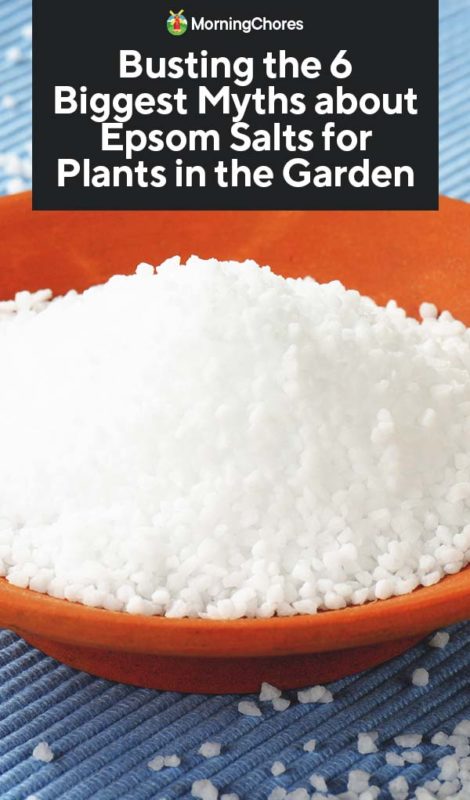Find Out About the Details Plants That Are Adversely Impacted by Epsom Salt Application
Epsom salt, a prominent house solution for various gardening issues, is usually commended for its beneficial results on plant growth. Not all plants react positively to its application. Comprehending the certain plants that can be adversely impacted by Epsom salt is important for any gardener looking to maximize their plant care routine. Roses, tomatoes, peppers, azaleas, and rhododendrons are simply a couple of instances of plants that may not respond well to Epsom salt. The reasons behind these adverse impacts and how to reduce them are essential knowledge for maintaining a flourishing garden.
Roses

Roses, particularly conscious adjustments in their atmosphere, can be adversely impacted by the application of Epsom salt. While Epsom salt is generally made use of as a fertilizer to advertise plant growth and improve flowering, roses are among the plants that do not react well to its application. The high magnesium content in Epsom salt can hinder the uptake of various other essential nutrients by the rose plants, leading to shortages that manifest as yellowing fallen leaves or stunted growth.

Tomatoes
Tomatoes, understood for their adaptability in cooking applications, can display adverse impacts when exposed to Epsom salt because of their details nutrient needs. While Epsom salt is commonly promoted as a treatment for numerous plant problems, including blossom end rot in tomatoes, its application can bring about harmful end results otherwise made use of judiciously. Tomatoes are hefty feeders that call for a balanced consumption of nutrients, especially calcium, to thrive. Excessive Epsom salt, which is magnesium sulfate, can interfere with the delicate nutrient balance needed by tomatoes, possibly bring about deficiencies in various other essential nutrients like calcium. This discrepancy may manifest in signs such as stunted development, yellowing leaves, or even reduced fruit production in tomatoes. As a result, when considering making use of Epsom salt on tomatoes, it is vital to abide by suggested application rates and dirt screening to avoid unexpected consequences on the total wellness and productivity of these precious yard plants.
Peppers
Peppers, revered for their numerous shades and degrees of spiciness, can show vulnerability to negative influences from Epsom salt when not used with treatment and factor to consider for their specific dietary requirements. what plants don't like epsom salt. Peppers, belonging to the Solanaceae household, call for a fragile balance of nutrients to flourish. While Epsom salt is recognized to enhance magnesium degrees in plants, excessive application can interrupt this balance, resulting in negative effects on pepper plants
When peppers are subjected to high levels of magnesium from Epsom salt, it can hinder the plant's capability to absorb various other crucial nutrients like calcium and potassium. This discrepancy may show up in signs and symptoms such as fallen leave staining, stunted development, and decreased fruit production. Additionally, the excessive magnesium can alter the soil pH, additional exacerbating nutrient uptake problems for peppers.

Rhododendrons
Given the level of sensitivity of particular plant varieties to inequalities brought on by Epsom salt, it is necessary to consider the influence on Rhododendrons, which also need specific nutrient degrees to grow. Rhododendrons are acid-loving plants that prefer acidic dirt conditions with a pH range between 4.5 and 6.0. Epsom salt, chemically called magnesium sulfate, can alter the dirt pH and interrupt the delicate balance of nutrients vital for Rhododendron wellness.

To over here preserve the ideal development and wellness of Rhododendrons, it is essential to stay clear of the unplanned usage of Epsom salt and instead focus on giving the certain acidic soil conditions and nutrients that these plants require for flourishing.
Azaleas
These prominent blooming plants are typically discovered in landscapes, yards, and parks due to their beauty and flexibility. While Epsom salt is commonly used as a solution for magnesium deficiency in plants, its application to azaleas can have damaging impacts.
Azaleas like slightly acidic dirt conditions, and an excess of magnesium from Epsom salt can disrupt this balance, leading to nutrient inequalities and prospective toxicity problems. The wrong application of Epsom salt can result in stunted growth, yellowing of leaves, and total decline in the health of azaleas.
Verdict
Finally, it is necessary to be knowledgeable about the particular plants that can be negatively impacted by the application of Epsom salt. Roses, tomatoes, azaleas, rhododendrons, and peppers are some instances of plants that might not profit from Epsom salt and might even suffer injury. It is vital to research study and understand the needs of each plant types prior to making use of Epsom salt as a fertilizer to guarantee their health and wellness and health.
Comprehending my company the certain plants that can be adversely affected by Epsom salt is important for any kind of garden enthusiast looking to maximize their plant care regimen. While Epsom salt is generally utilized as a plant food to promote plant development and enhance blooming, roses are one of the plants that do not respond well to its application.Too much use of Epsom salt can additionally result in an accumulation of salts in the dirt, leading to root damages and dehydration of the rose plants. While Epsom salt is known to boost magnesium levels in plants, too much application can interrupt this equilibrium, leading to adverse results on pepper plants.
The high salt content in Epsom salt can likewise dehydrate Rhododendron origins, creating further stress and anxiety and damages to the plant. (what plants don't like epsom salt)